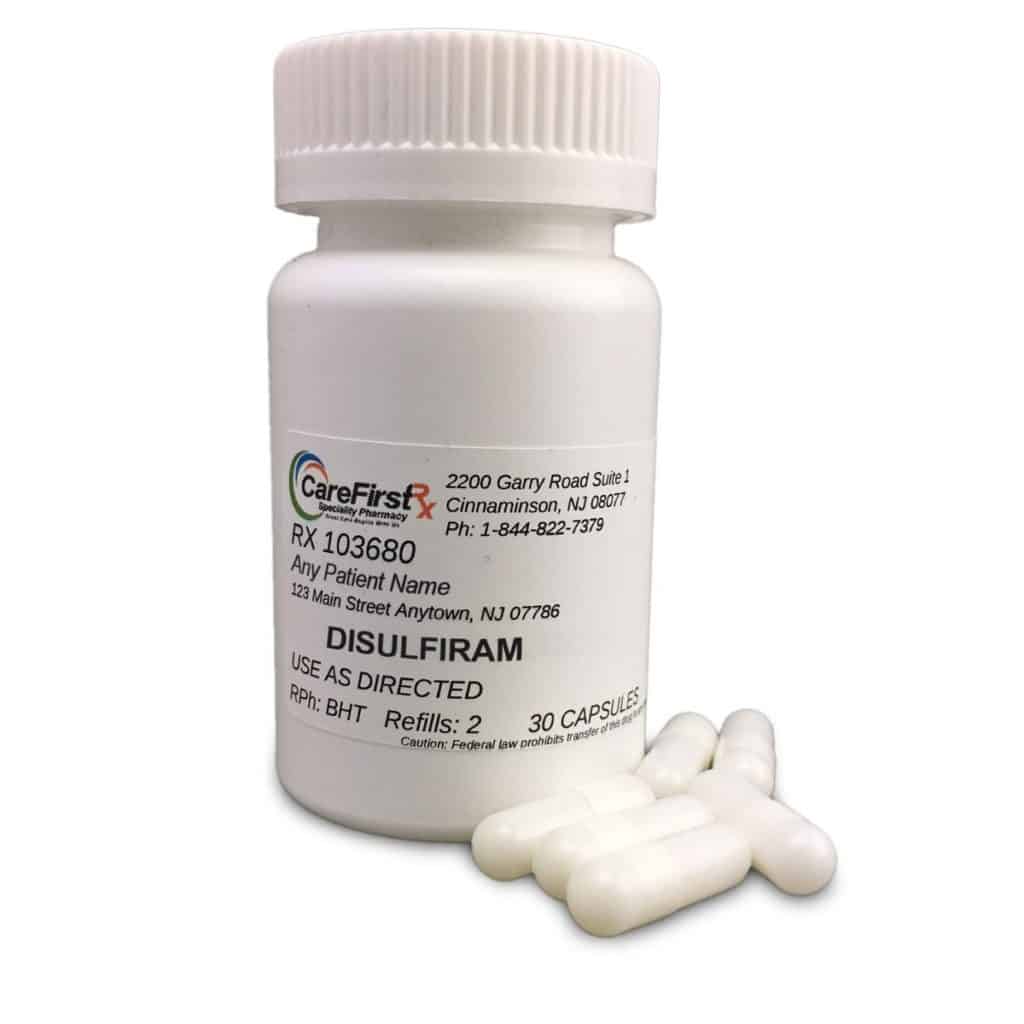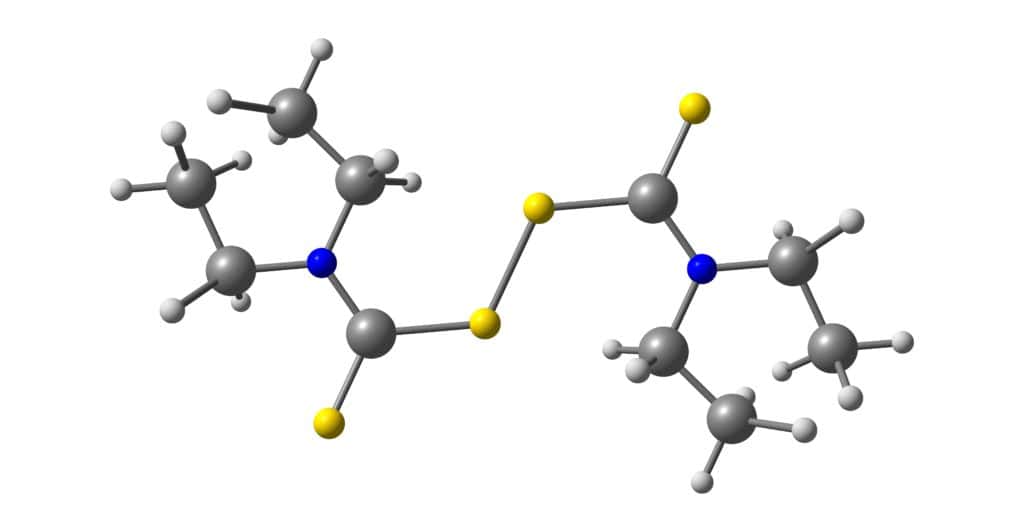Medication Treatment Options for Alcohol Use Disorder
Alcohol dependency doesn’t always get the serious attention it warrants. From its use with other drugs to its devastating effects on the mind, helping people overcome this disease means more than helping people enjoy a better life – it’s about saving their lives.
Treatment for alcohol use disorder often involves a multifaceted approach, comprised of evidence based interventions such as cognitive behavioral therapy (CBT), group and individual sessions, and complementary therapies such as yoga, equine therapy, and massage. In some cases, medication-assisted detox and treatment can be the step some people need to get to recovery. Several different medications have been approved for the treatment of alcohol use disorder and associated comorbidities. One such medication is disulfiram (Antabuse).
In This Post You Will Find:
- What is Disulfiram?
- Is Disulfiram Safe to Use?
- How Does Antabuse Work?
- Disulfiram Side Effects
- How Long Should I Take Disulfiram?
- The Use of Medication in Alcohol Recovery
What is Disulfiram Used For?

Disulfiram is the first FDA-approved medication for the treatment of alcohol use disorder. For the past 60 years, specialists in addiction medicine have prescribed disulfiram (brand name Antabuse) to help patients maintain their sobriety.
Disulfiram only makes up one aspect of a comprehensive treatment plan. It is not intended for use on its own; it is most effective when combined with group and individual therapy or counseling. Disulfiram may accompany inpatient rehabilitation, outpatient rehabilitation, and other strategies specially designed to treat AUD.
Antabuse can be an effective treatment for alcohol use disorder after the initial detoxification period. An addiction medicine specialist may prescribe disulfiram after all alcohol leaves the body. It is only appropriate for use after all withdrawal symptoms have disappeared. In severe cases or alcohol use disorders, a patient may require other medications, such as benzodiazepines, to alleviate the symptoms of withdrawal.
A patient can remain on disulfiram as long as necessary. If a patient decides with their provider that they can support a long term recovery without the use of disulfiram, they may discontinue use without tapering or negative side effects.
Is Disulfiram Safe to Use?
Every medication comes with benefits and risks, and Antabuse is no different. If your provider prescribed you disulfiram, it is because they believe the benefits of taking the medication outweigh any potential risks. There is some evidence, for example, that use of disulfiram can lead to hepatitis. Incidence of this is around 1 in 30,000 treated patients.
There are also risks associated with Antabuse when used incorrectly. When used in combination of alcohol, fatal interactions can occur.
How Does Antabuse Work?
Disulfiram is different from other medications used to treat alcohol use disorder, as it does not directly affect the brain’s receptors. Rather, it works to alter the way the body breaks down and removes alcohol from a person’s system. It is the changes to this process that ultimately make it effective.

Disulfiram Molecular Structure
Disulfiram works to reduce the likelihood of drinking alcohol through a very specific mechanism. The metabolization process for alcohol starts by converting the alcohol we drink into acetaldehyde, which is responsible for the unpleasant symptoms of a hangover. When the body breaks down these alcohol molecules further, hangover symptoms abate.
Disulfiram works by blocking the process, which leads to an increased level of acetaldehyde in the body. In other words, when a person taking Antabuse drinks alcohol, he or she will experience an intense hangover.
Drinking while on Antabuse can have several unpleasant effects, including:
- Headaches
- Sweating
- Nausea and vomiting
- Trouble breathing
- Chest pain
- Anxiety
- Blurred vision
- Weakness
- Confusion
When using disulfiram as directed, it is essential to avoid all foods and products containing alcohol. Even small amounts of alcohol can lead to a reaction or more severe Antabuse side effects. Check all labels carefully before using new products or foods that may contain alcohol.
Common culprits include:
- Cough medicines
- Mouthwash
- Cooking wines (Sherry, Marsala).
- Hair dyes
- Antiperspirant deodorants
- Aftershaves, colognes, and perfumes
Talk to your prescribing physician about the safety of using products that contain any alcohol, even topically.

Drinking while taking disulfiram can send your body into symptoms similar to a hangover, but it is important to understand the difference between being hungover and experiencing alcohol withdrawal.
After months or years of chronic, heavy drinking, a person’s body becomes physiologically affected by alcohol. When it is removed suddenly, it can lead to withdrawal. Depending on the nature and duration of the drinking, people may experience headaches, nausea, anxiety, shaking, sweating, or seizures. In rare cases (affecting less than 5% of people with AUD) a potentially fatal condition called delirium tremens may occur.
To mitigate the risk of these side effects, many people elect to undergo medication-assisted detox. This effectively removes all alcohol from a person’s system and reduces the side effects of alcohol withdrawal. It is essential for chronic heavy drinkers to undergo medication assisted detox in order to reduce the risk of potentially harmful effects.
Fortunately, the withdrawal period is generally brief. People may experience withdrawal symptoms for up to 5 days, though some, more sensitive patients may experience alcohol withdrawal headaches for weeks. Once a person is fully detoxed from alcohol, they may begin taking disulfiram, but not before. A healthcare provider should be monitoring the progress closely and tell patients when they’re ready.
Disulfiram Side Effects
There are several benefits to taking disulfiram in the treatment of alcohol use disorder, but taking the medication, even as directed, can have side effects. Antabuse side effects vary from person to person, but some of the most commonly noted minor side effects include:
- Drowsiness
- Acne or skin rashes
- Headaches
These symptoms typically abate within the first few days of starting Antabuse. Talk to your prescribing physician about your medical history and any other medications that you are currently taking before beginning Antabuse. Some prescription and over the counter medications can interact with disulfiram, causing a disulfiram like reaction (examples include certain classes of antibiotics).
Other, more serious side effects can also occur when taking disulfiram. These include:
- Vomiting
- Yellowing of the skin or eyes (jaundice)
- Dark urine
- Loss of appetite
- Sedative effects
How Long Should I Take Disulfiram?
Finding the right dose and course of disulfiram can depend on a person’s reaction and history of alcohol use disorder. Generally, however, a patient takes disulfiram once daily until they are recovered socially from the temptation to use alcohol. Once a patient feels they have control over their substance use, they may begin the tapering process.
Maintenance therapy (daily administration of disulfiram) can take months or years even.
When taking disulfiram, a patient generally participates in other interventions that helps them control and develop compensatory strategies for their alcohol use disorder. Some of these other interventions include:
- Determining the factors that contribute to their addiction. Through individual and group counseling sessions, patients address the presence of trauma, dysfunctional relationships, and genetic predispositions that all play a role in the development of alcohol use disorder.
- Creating and developing strategies to address cravings. Once a person fully understands the social, environmental, and biological determinants of their AUD, they can develop strategies that help address triggers for alcohol abuse, such as stress or anxiety. Coping strategies can include holistic or complementary therapies such as exercise therapy, equine (horse) therapy, yoga, massage, and more.
- Participation in ongoing group support sessions
Once a healthcare provider decides a patient has recovered enough to taper off disulfiram, they will gradually cut down dosage until it is no longer required. Even once a person discontinues using Antabuse, it is essential to continue to abstain from alcohol to maintain sobriety.
The Use of Medication in Alcohol Recovery
Recovering from alcohol use disorder requires a multi-dimensional approach. When approached with the right mindset, the recovery process is lifesaving.

People experiencing an alcohol use disorder generally benefit from interventions like individual counseling, group therapy, and holistic and complementary therapy. Medications can also play a valuable role in the recovery process, whether it is a medication-assisted detox or maintenance plan.
Disulfiram is the oldest FDA-approved medication for the treatment of alcohol use. When used as directed, it can help discourage patients from drinking and support a long-term recovery. Once they believe they have recovered sufficiently, they can taper off the medication without serious side effects.
Find Compassionate Alcohol Use Disorder Help at Bright Future Recovery
Whatever leads you to our doorstep, know that we are invested in your recovery and in helping you overcome the devastating effects of alcohol use disorder. We believe detoxing shouldn’t be something to enter in fear. Our recovery prep program is about just that – preparing those with alcohol dependency for their next steps, getting them medically stable enough to complete rehabilitation programs. With locations in Hollister and San Francisco, find intervention services, professional detox, post-treatment care, and a 5-year case management and monitoring program.
